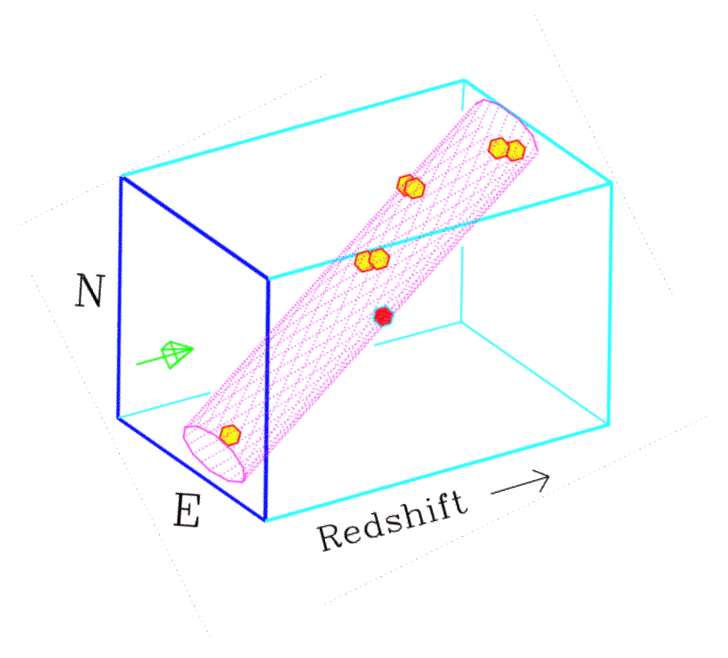
Ly-α Emitting Galaxy-building Objects (LEGOs)

|
|
Ly-α Emitting Galaxy-building Objects (LEGOs) |
|
Here are links to searches for LEGOs at very high redshifts done by
other groups:
CADIS,
LALA,
SUBARU.
Since the most abundant element in the universe is hydrogen and the
strongest transition in the hydrogen atom is Lyman-α (Ly-α),
the Ly-α line was early on suggested as a probe of galaxy
formation in the early universe (e.g. Partridge & Peebles, 1967, ApJ
147, 868, see here for more
information on Ly-α). By studying the Ly-α absorption due
to hydrogen clouds along the line of sight to high redshift quasars a
wealth of information has been collected about the growth of structure
ranging from very dilute clouds only slightly denser than the
mean density of the universe and up to forming proto-galaxies - the
so called Damped Ly-α Absorbers (DLAs). After many years of
wandering in the darkness (Pricthet 1994, PASP 106,
1052)
the search for Ly-α emission has in recent years proven to be a
powerful tool for studying the galaxy population at high redshifts (z=2-7).
We are involved in several projects studying the properties of high
redshift Ly-α emitters (or LEGOs as we call them - short for
Ly-α Emitting Galaxy-building Objects).
The term LEGO of course refers to the Danish
toy building blocks.
We choose this name as the Ly-α emitters seem to be the small building
blocks out of which todays large galaxies formed through merging
of many such small blocks.
At high redshift the Ly-α emitters can be used to map out the large
scale structure. An example can be seen in the figure below where
7 LEGOs map out a filamentary structure at redshift z=3.03.

You can find more information on this discovery here:
A Glimpse of the Very Early Universal Web,
A&A Letter,
BBC,
Scientific American,
space.com.
Below you can find links with more information on some of our ongoing projects.
The NOT slice of the z=2 universe.
The "Building
the Bridge" Ly-α survey.
Ly-α imaging of GRB host galaxy fields.
The first searches for LEGOs with 10m class telescopes were done at the
Keck telescopes by Len Cowie,
Esther Hu,
Richard McMahon
and collaborators. See more on that work here.